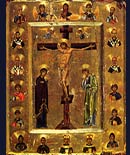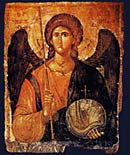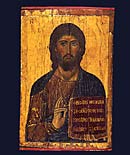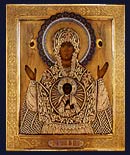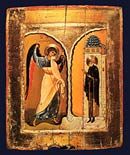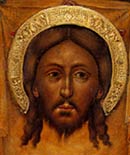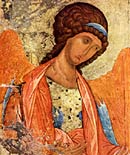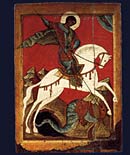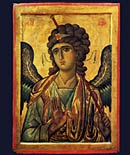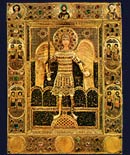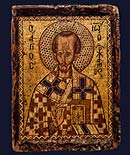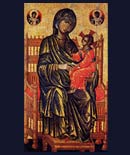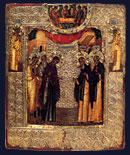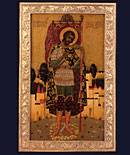How Ikons Are Created - About the Egg Tempera Media
The egg tempera medium is created by draining the yolks of fresh eggs. I do it by hand, rolling the yolk in a broken half-shell while carefully pouring out the white. Once most of the white is gone I roll the intact yolk in my cupped fingers to drain off the last of the white. Then I delicately hold the yolk while I pierce the membrane with a needle or tip of a knife. Next I gently drain the contents of the yolk into a clean cup or bowl, making sure that none of the membrane gets mixed in, which is discarded. Following this, I gently mix in a small amount of water and a tiny quantity of alcohol or vinegar as a preservative.
Pigments are mixed, usually the night before, in small bottles. I use baby food jars. Some choose to wet their dry pigments on china or glass, using a palate knife, however I have always mixed them in the bottle. Some dry pigments do not wet easily and the use of a few drops of a wetting agent, like Ox Gall is always a good idea. Ox Gall is inexpensive and can be ordered from Sinopia. Next I take a certain quantity of wetted pigment and mix it with a quantity of the egg mixture, either in another baby food jar or on an old china plate. It is important to get the mixture right, and this can vary. One has to watch for a velvety-matte effect as the paint dries, to little medium will leave a dry bleached out surface, while too much will make for an oily and pasty surface. Recognizing the right mixture is something that can only be learned by experimentation and observation.
Wetted pigments in sealed jars can be stored for a few days, perhaps as long as a week. I find that mixed pigments are useless if not used within 4 -12 hours.
Normally, differently colored pigments are not mixed together as much as in modern painting, but are used straight out of the bottle. This is not always possible, for example the underpainting of flesh tones is a mixture of various earth tones. The Imperial purple of the Virgin's robes is a mixture of Hematite and Cinnabar. There is not hard and fast rule about mixing colors, it's simply a situation of trial and error. In some cases the minerals used can react to each other in unexpected ways.
Request a quote on a painting seen on this page or a new commission from Bob Atchison, click here.
Next chapter: Choosing an Ikon to Paint and The Drawing


